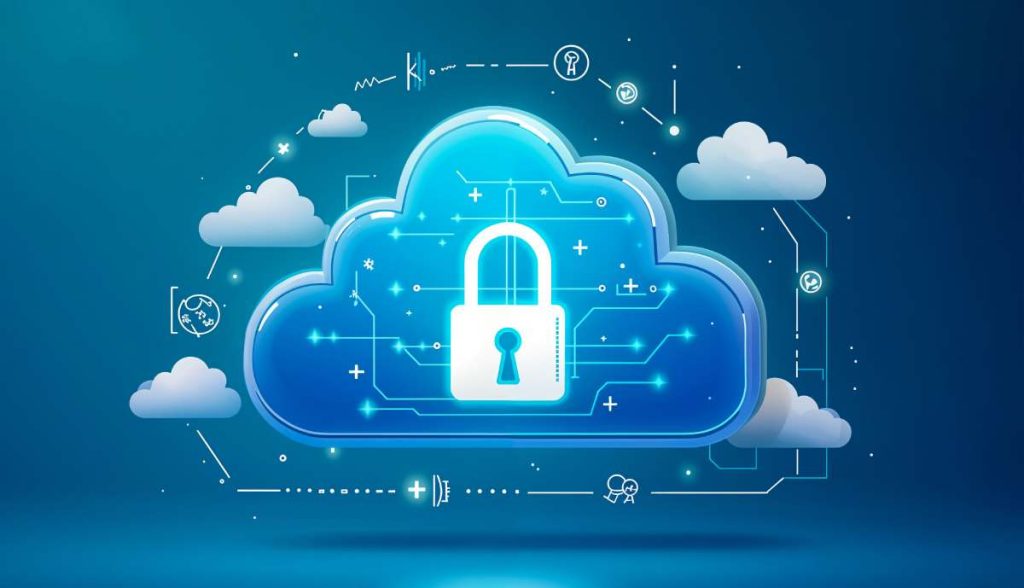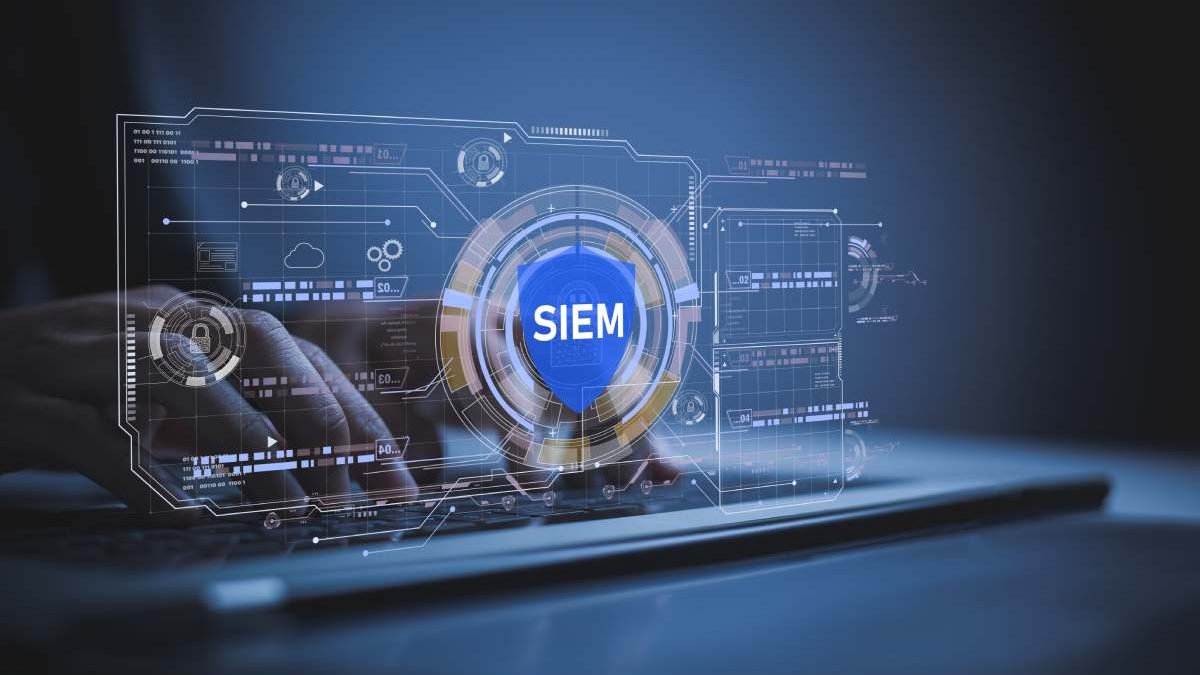Keeping your business safe should be a top priority. However, challenges such as ransomware, DDoS attacks, advanced persistent threats, and social engineering make it difficult. Let’s not forget the complexities that come with using a cloud-hosted environment, such as interdependencies, multi-cloud deployment, and compliance.
That’s why you need to implement proactive security measures to identify threats before they can impact your organization.
In this article, we’ll discover how Application Security Posture Management (ASPM), Security Information and Event Management (SIEM), and SOC 1 and SOC 2 compliance frameworks help you stay ahead of cyber threats.
Table of Contents
ToggleApplication Security Posture Management (ASPM)
ASPM is a continuous security framework that helps you manage security throughout an app’s lifecycle. It constantly checks for vulnerabilities by analyzing code, configurations, and dependencies. It also gives real-time insights based on risk levels to help you fix issues faster.
Here’s an overview of how an APSM tool works. It starts with the planning and design phase.
It reviews the app’s architecture and security policies to spot risks before development starts. During development, it scans code for vulnerabilities and instantly alerts you to insecure coding practices.
As the development team moves to the build and integration phase, the ASPM tool scans CI/CD pipelines to catch security flaws and find any missed vulnerabilities.
In the testing stage, it runs security checks with functional tests and instantly reports any vulnerabilities or compliance issues. And during deployment, it validates configurations and ensures security controls are in place.
Its job doesn’t end there. Once your app is live, ASPM constantly monitors security, tracking threats, attack surfaces, and compliance risks. If an incident happens, it helps you respond fast, fix vulnerabilities, and reduce downtime.
Here are some of the major benefits of an ASPM tool:
- Continuous risk monitoring: ASPM gives you continuous visibility into your app’s infrastructure. It monitors code, dependencies, and configurations in real time to detect threats and ensure your app remains secure.
- Faster remediation: When security risks are detected, it alerts you instantly to ensure you fix them fast. It prioritizes risks based on severity, so you know what to tackle first. It also automates preconfigured remediation steps, thereby reducing manual effort and response time.
- Security shift-left: Shift-left security means integrating security early in the development process to catch and fix issues before they reach production, and that is the core function of an ASPM tool. It scans code as you write and catches vulnerabilities before they reach production. This reduces costly fixes and security gaps later in the process.
Security Information and Event Management (SIEM)
SIEM is a set of tools and services that collect data from across a company’s security architecture and enable rapid threat detection and response by alerting the cyber defense team in the event of an attack.
Organizations use SIEM for a number of functions, including:
- Forensic and Threat Hunting: The information SIEM collects is invaluable for proactive threat hunting and post-incident investigation. Instead of doing the laborious task of manually gathering and processing data that they need from various systems and solutions, your team can simply query the SIEM and increase the effectiveness and speed of the investigation.
- Regulatory Compliance: Every business, including yours, is required to adhere to various data protection regulations, each with tough requirements. Your team can use SIEM solutions and tools to help prove compliance because the information they collect and store can show that the necessary controls and policies are in place and enforced.
- Detect and Analyze Threats: Security Information and event management tools have built-in support for data analytics tools and policies, which can be applied to the information gathered and automatically detect signs of potential intrusion into a company’s network or system.
SIEM systems help you detect and respond to security threats by collecting and analyzing data from across your IT environment. They act as a central hub, pulling logs from servers, applications, and networks to identify suspicious activity.
They offer real-time analytics that continuously monitor your data, spot anomalies, and alert you to potential security incidents before they escalate. Instead of manually sifting through logs, you get automated insights that speed up investigation and response.
A key advantage of SIEM is its centralized log management, which helps you track security events across different systems in one place. This improves visibility, making it easier to correlate threats and respond quickly. It also simplifies compliance by keeping detailed records of security incidents.
As businesses move to cloud-native and hybrid infrastructures, SIEM becomes even more critical. It integrates with cloud services and on-prem systems to help you secure a complex, distributed environment. It works for both on-site servers and cloud applications and ensures you have a unified security strategy.
Challenges and Risks of Cloud-Hosted Data

Hosting your company’s data in the cloud provides an extra layer of efficiency; however, there are a few challenges that come with it.
Data Visibility and Control Concerns
When you store data in the cloud, you lose some control over how it’s managed and secured; plus, you don’t always have full visibility into where it’s stored or who can access it.
Unfortunately, if you can’t track your data, identifying security risks becomes harder. You’ll face issues like shadow IT—security blind spots created when employees use unauthorized apps, misconfigurations, overly permissive access settings, etc.
Shared Responsibility Model with Cloud Providers
When you use cloud services, security isn’t just the provider’s job—it’s a shared responsibility.
Sure, the cloud provider secures the infrastructure, like servers and networks, but you must protect your data, applications, and user access. If you assume the provider handles everything, you risk data breaches, misconfigurations, and compliance failures. You need to set up strong access controls, encrypt sensitive data, and monitor security threats.
Regulatory Compliance and Governance
Regulatory compliance and governance can be tricky when managing cloud-hosted data. You need to configure your cloud security settings to follow strict data protection laws like GDPR, HIPAA, or CCPA, depending on your industry and location, or risk paying fines.
You also need to track where your data is stored, as some regulations require it to stay within certain regions. Audits can be challenging if you don’t have full visibility into your cloud environment.
Understanding SOC 1 and SOC 2 Compliance
Compliance is an often-overlooked way to keep your data secure. This is because it ensures you follow industry standards and regulations that are designed to reduce security risks. Here are the two most popular types of compliance under the System and Organization Controls (SOC) framework.
SOC 1
SOC 1 compliance helps companies prove that their company handles financial data securely. It’s designed for businesses that process transactions or (directly/indirectly) impact their clients’ financial reporting.
For instance, if your company provides payroll, billing, or financial transaction services, clients may require a SOC 1 report before working with you.
The compliance process involves an independent audit that reviews how you manage risks related to financial reporting. The role of the process is to define your control objectives—these are the policies and procedures that protect financial information.
There are two types of SOC 1 reports.
A Type I report evaluates your controls at a single point in time, while a Type II report tests them over several months to ensure they function consistently.
SOC 2
Created by the American Institute of CPAs (AICPA), SOC 2 is a voluntary compliance standard for service organizations that specifies how they should manage customer data. Businesses can tailor it to their unique needs and design controls that follow one of these Trust Services Criteria: security, availability, processing integrity, privacy, and confidentiality.
Like SOC 1, SOC 2 is divided into Type I and Type II reports. The Type I report checks your security controls at a single point in time and verifies that you have implemented all the necessary controls, but doesn’t check the effectiveness of the controls. The Type II report evaluates your controls over some time, between 3 and 12 months, and goes further to check how effective they are.
Being compliant with SOC 2 indicates that your company maintains a high level of information security and that you and your team handle sensitive information responsibly. It also gives you a competitive edge because customers and investors prefer to partner with organizations that can prove they have robust information safety practices, especially for those in IT and cloud services.
Build a Holistic Cybersecurity Strategy
Enhancing the security of your cloud-hosted data goes beyond employing a single strategy; organizations must adopt several approaches to guarantee impregnable security.
One way to do that is by integrating ASPM for real-time, precise visibility and mapping of your cloud and on-premise applications, APIs, microservices, dependencies, and data flow. Also, integrating SIEM will provide your team with analytics that can help them detect threats, risks, or suspicious activities and provide long-term trend analysis of any issue, which is useful for security audits and compliance.
Combining SOC 1 and SOC 2 with ASPM and SIEM will yield further benefits for your business. If you are a financial service organization or any company that collects users’ information, SOC 1 and SOC 2 are your best chance to prove to your users and regulatory bodies that you practice safe data storage and comply with regulations.
Also Read: The Perfect Guide to Seamlessly Transition from SQL Server to Snowflake
Shashi Teja
Related posts
Hot Topics
How Financial Advisor Platforms Are Adapting to Gen Z Investors
Gen Z in Europe is reshaping the investment landscape at remarkable speed. Nearly all of this generation are digital natives,…
Granite Tiles and Roof Tiles: Durable Combinations for Homes
Choosing the right materials can make all the difference in a home’s durability and style. Granite tiles and roof tiles…



